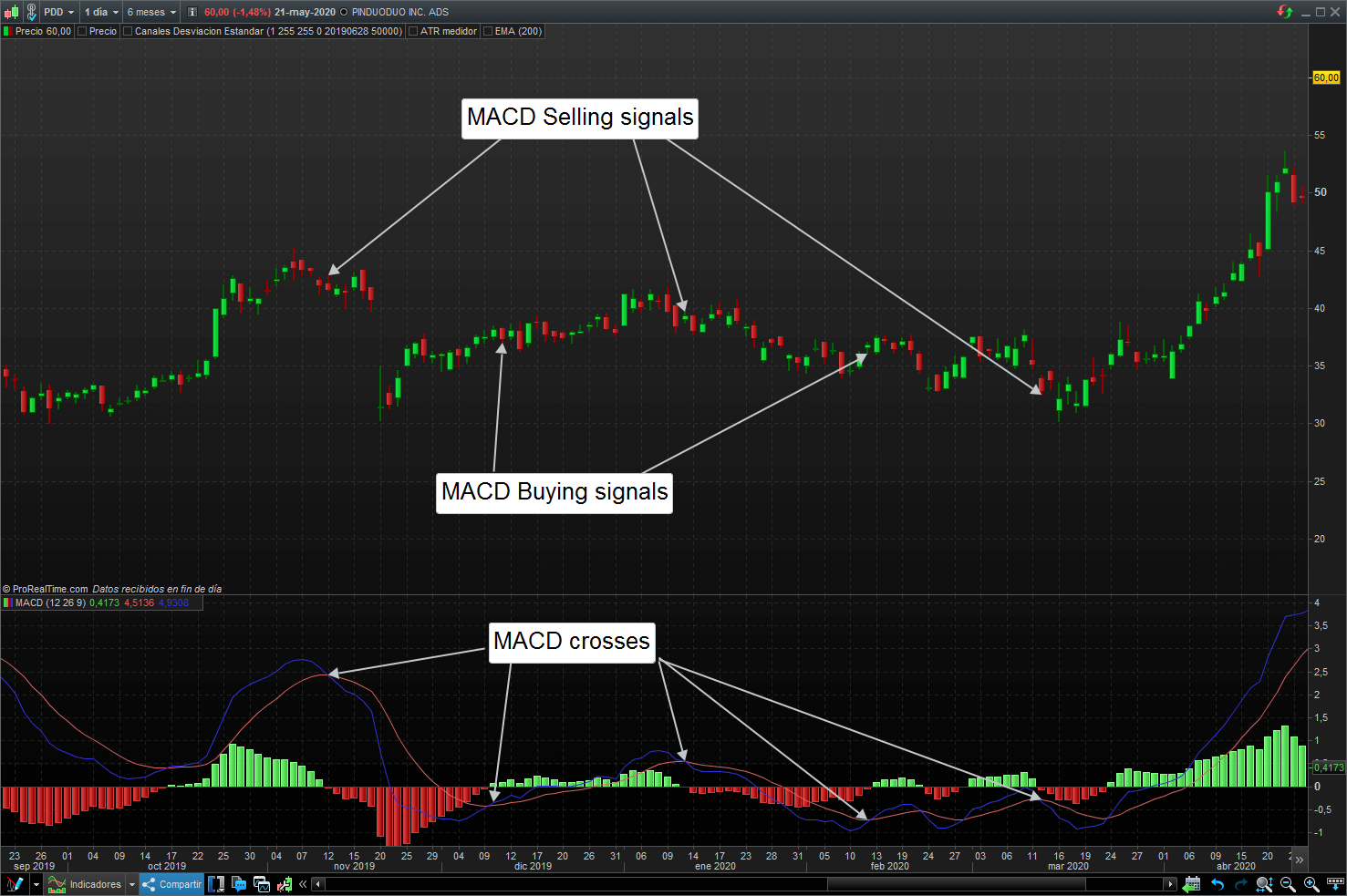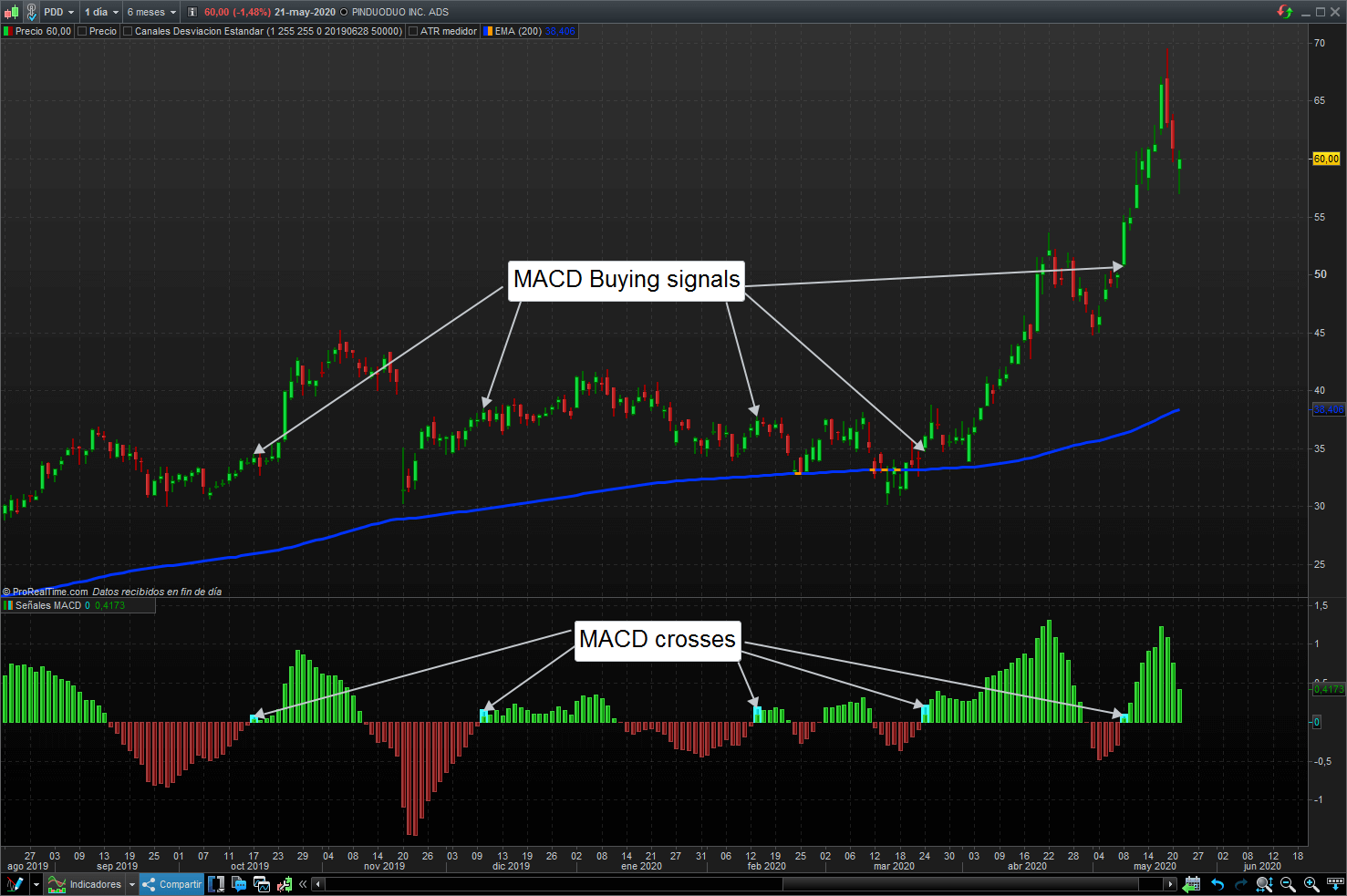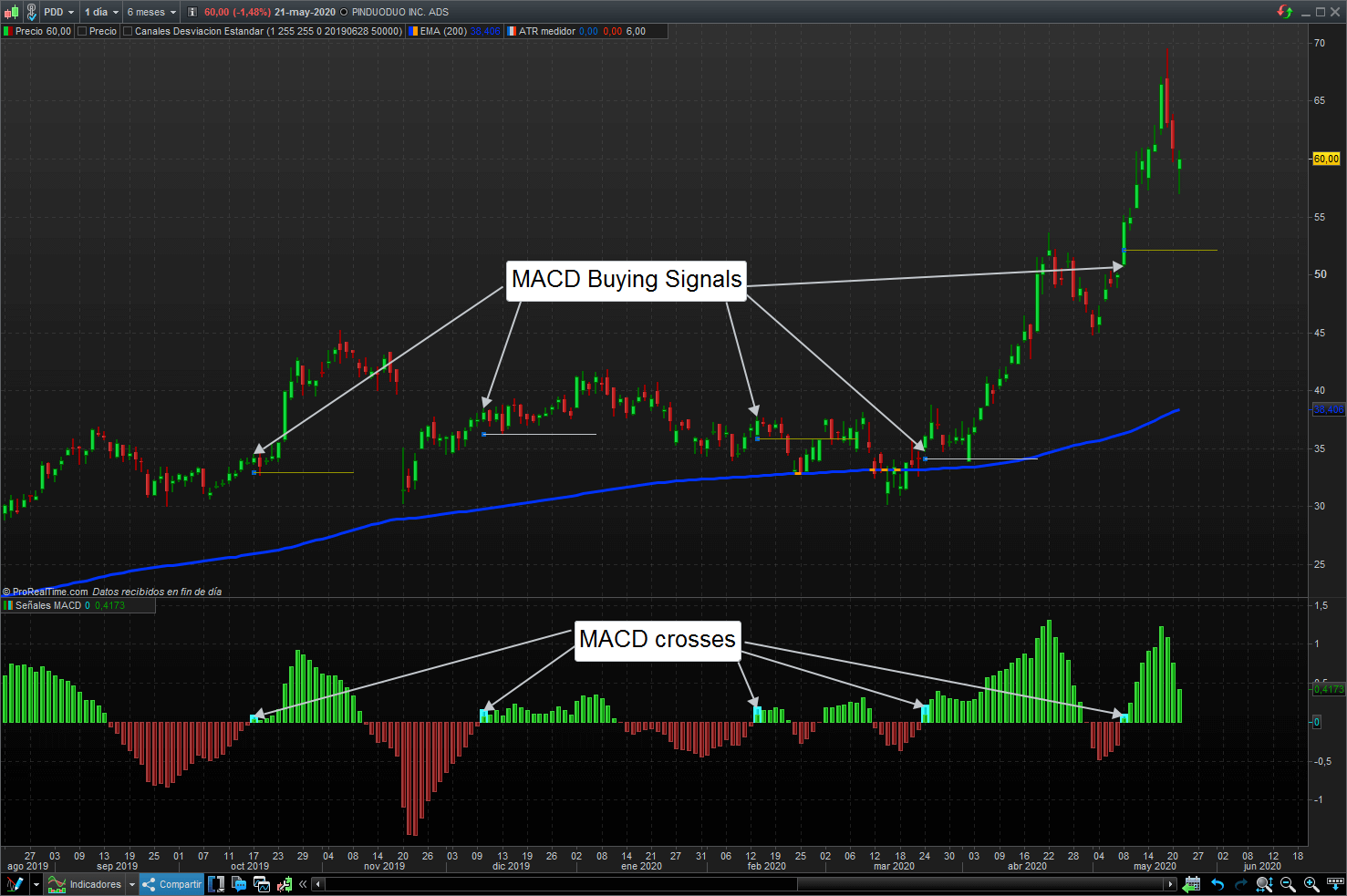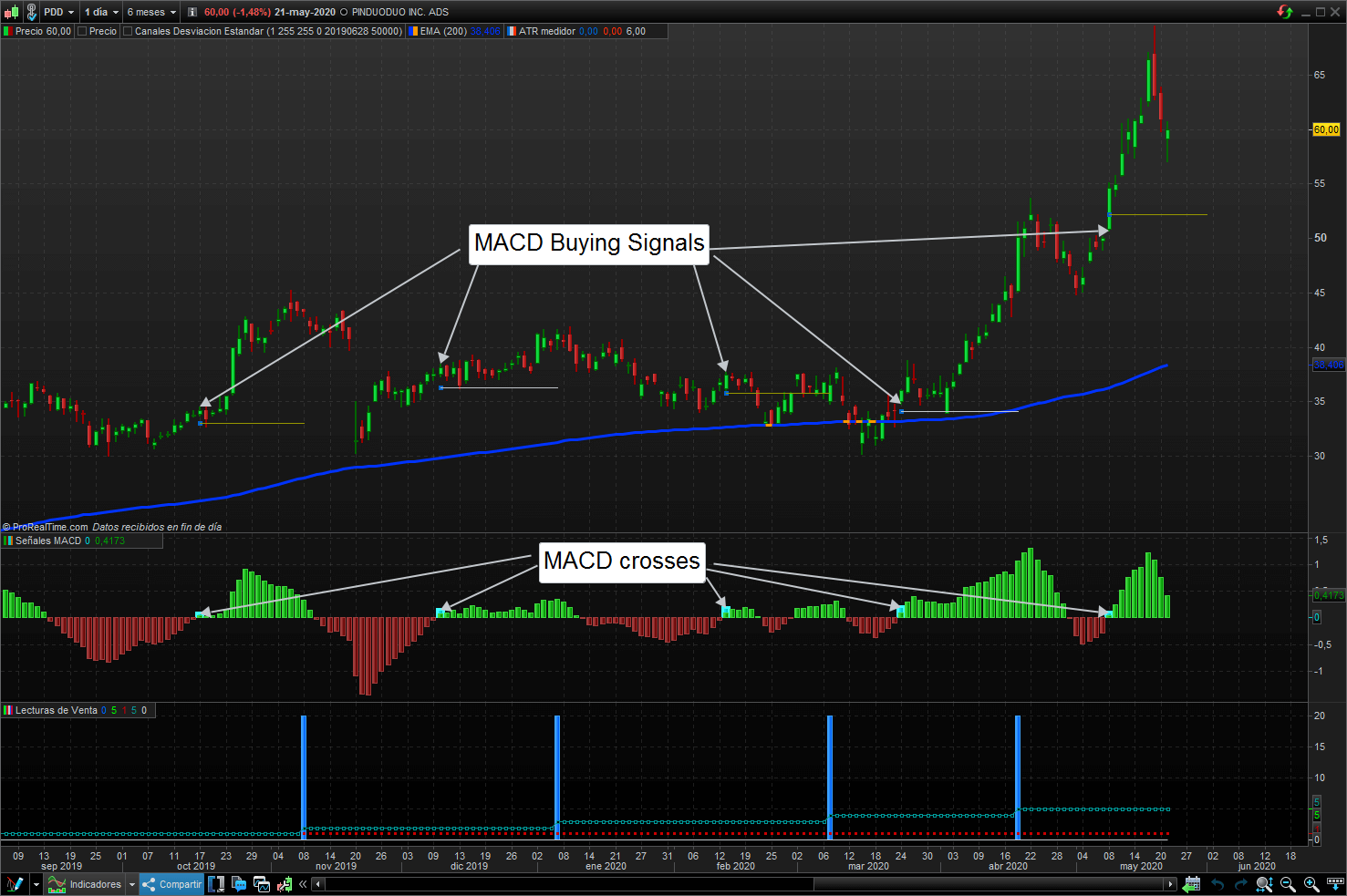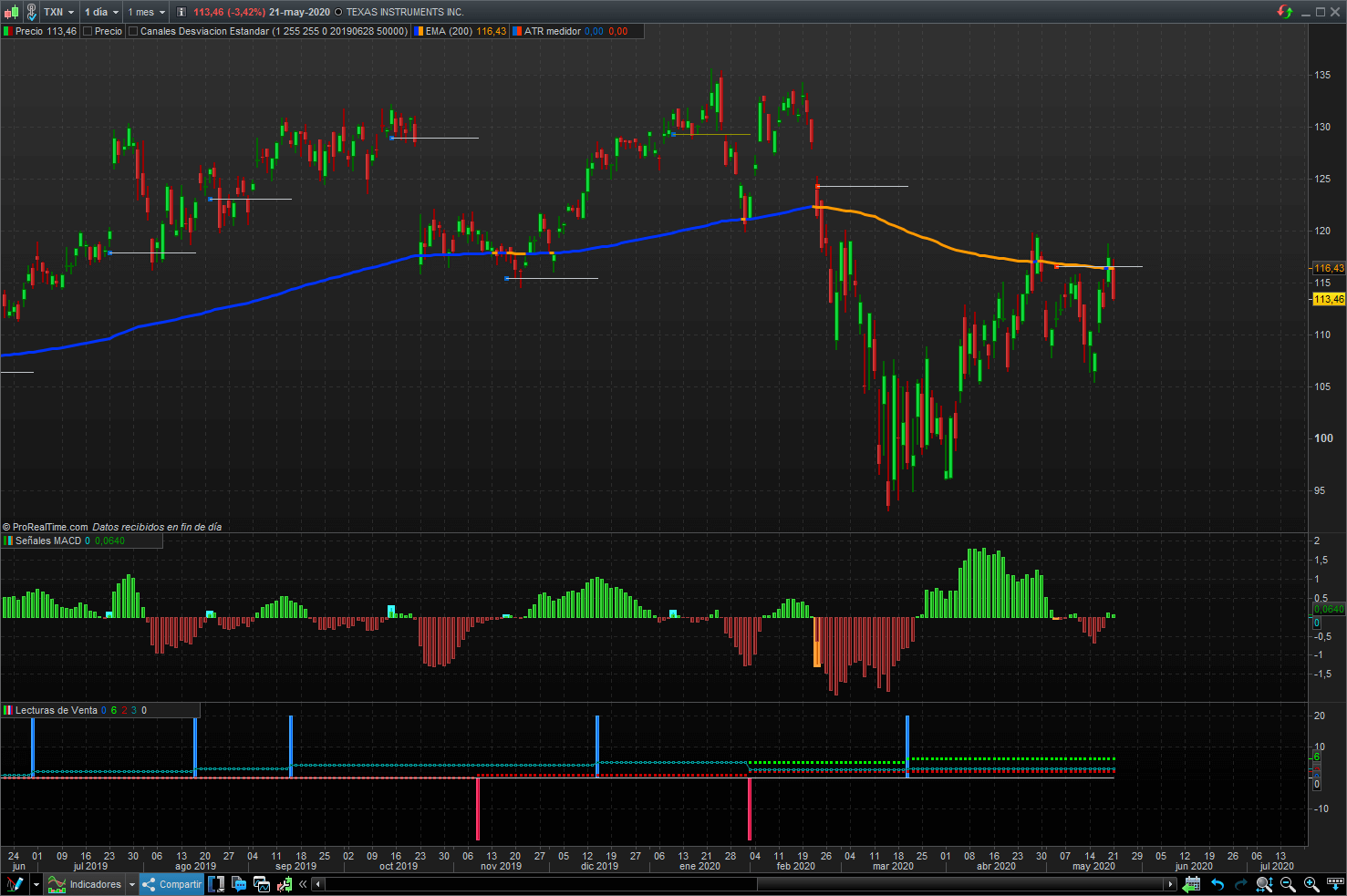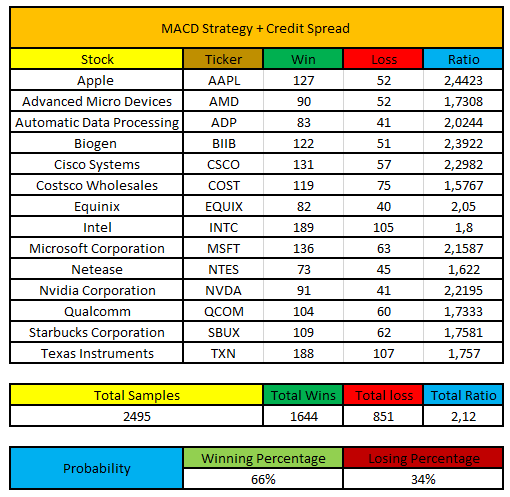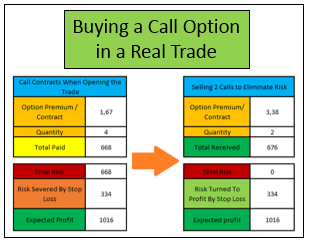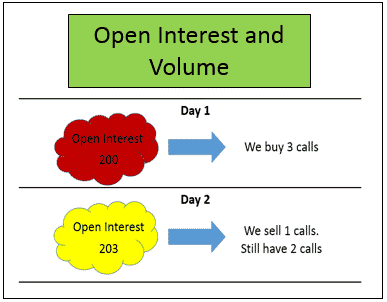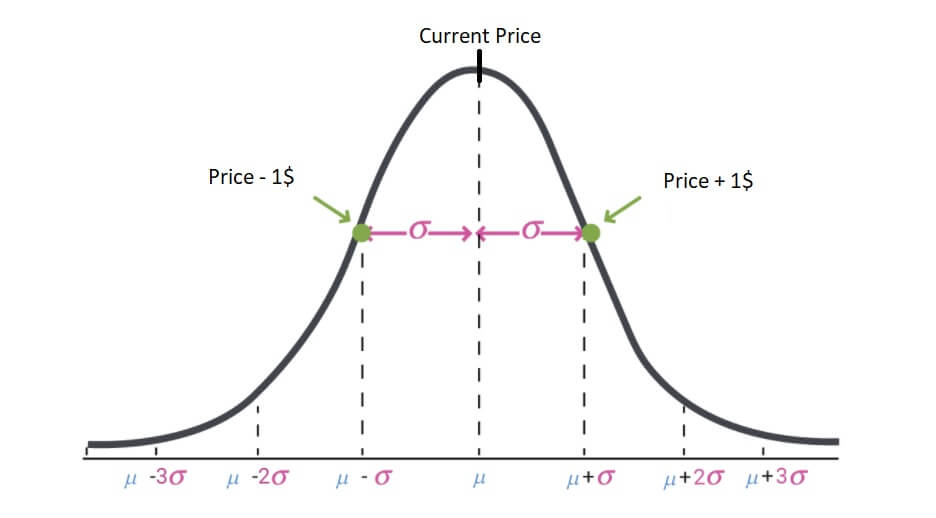MACD Indicator Strategy In Option Trading – Does It Really Work?
In this article, we will perform a review of how to use the MACD indicator strategy in options trading, mainly by selling credit spreads monthly.
We will be focusing on different experiments made, we will have a historical data review of many different stocks in the market, we will be providing information on how to set it the strategy up and much more.
So, let us start!
Table of Contents
What is the MACD indicator?
MACD indicator comes from Moving Average Convergence Divergence, and it is a technical indicator that will help us to identify the trend and its momentum in the market. It will show us the relationship between two moving averages, typically, the 12 and 26 exponential moving averages.
When we subtract the slower exponential average to the faster one, we will obtain what is called the MACD line. Then, providing another exponential moving average called the MACD signal, typically, a 9 exponential moving average, we will obtain the MACD indicator.
MACD indicator will provide buying and selling signals in the market when the MACD line crosses over or crosses under. This is also represented in the MACD Histogram, which is the graphical representation of the strategy. Let us look to an example:
As you can see, when the MACD signal crosses under the MACD line, a selling signal will appear, as it is marked in the graph. However, when the MACD signal crosses over the MACD line, a buying signal will appear.
Sometimes, these crosses will work very well, showing us great entry points. However, there are times where the MACD indicator will provide constant errors and false entries. But of course, there are different ways to filter these fake signals by understanding the current trend.
Filtering MACD to set better entry points
If we decided to add a graphical way of determining how the trend is acting now, our MACD indicator would perform better. So, to begin setting up our system, we are going to add a 200 Exponential Moving Average that will filter entry signals using the trend.
We will consider the market to be in an uptrend when the 200-EMA is increasing, while we will consider the opposite when the 200-EMA is decreasing.
Then, this would be the result of our price chart.
As you can see, if we add the 200-EMA, we now know we are in a general bullish trend.
To make the analysis a little more visual, I have programmed the MACD crosses as a histogram signal. So, the bullish signal will be provided when that blue bar marked with an arrow appears in the MACD histogram, while a bearish signal will have an orange bar.
Provided that we are in a bullish trend right now, we will only find bullish signals in the market. These are still not perfect, but they are indeed accurate. However, we still have to define several more parameters to check if the MACD actually works or not.
Using MACD indicator with credit spreads
To set up our option strategy, we are going to use credit spreads, because they will provide us with a limited risk and a fixed profit. Also, they will give us a better probability of profit, so combining both the MACD indicator and selling credit spread, we will perform our experiments, and we will see how do they work.
Do you need a Calculator that helps you create and analyze any option strategy in record time? |
Setting Strike Prices with the MACD indicator strategy
First of all, we need to specify which strike to sell in the first leg of our option spread. To do so, we are going to use the Average True Range of the stock (ATR), so we can measure how much the price can move in the day.
Whenever a MACD buying or selling signal is displayed in the indicator, we will open a credit spread to the next day. The upper strike price leg will be picked by subtracting the ATR to the closing price. Of course, this is not exact, but we will have an approximation to perform the tests.
For example, for a buying signal, if the stock price at closing is $54.63 and the ATR is $1.87, we will open the first leg of the credit spread at $53 strike price. Of course, we could pick a lower strike price, but that would limit our gains too much.
The second leg of the credit spread will limit our risk, so it’s up to the trader to select the strike price. I would choose $51 or $50, for example.
That being said, let us see the price chart again, adding these components.
Now, when an entry signal is spotted in the MACD, above in the price graph, we will draw a point and a line that will represent the strike price. The aim is that the stock price does not fall below the line when a month passes.
Notice the strike line is extended to 20 candlestick ahead, approximately a month, and expiring on a Friday. This strategy now is relatively easier to backtest with visual inspection. However, if we want to check that the MACD indicator strategy combined with a credit spread works actually or not, we should measure the number of winning and losing trades, following these rules.
Backtesting the MACD indicator strategy
Now, we will be adding a backtesting indicator that will show us how many times did the strategy failed and how many times did it work.
We will count a win whenever the closing price ends up above the strike price in a bullish trend or ends up below in a bearish trend. Of course, a failure will be count if the contrary happens.
Finally, we are not considering any kind of adjustment nor rolling the trade to a different expiration date. In every case, we will open the credit spread, and we will stick to it until the expiration.
In the image above, the backtesting indicator is added. In this case, every bullish trade that the MACD indicator spotted was correct. Also, this indicator will provide us with the historical data
As you can see, for Pinduoduo, using the MACD indicator strategy along with the credit spread would have resulted in a 5 win – 1 loss ratio. This is an outstanding winning rate.
Now, let us look to another example, as it could be Texas Instruments
In this case, we spot two failing trades and six winning trades in total. This is also quite a high ratio.
However, we must remember that we should obtain a more significant sample. We will review this strategy again, but this time, we are going to get more than 1000 signals in different stocks in the market and see what we will get.
MACD indicator strategy: In-depth analysis
Again, let us summarize our criteria:
- We are only picking MACD entry signals when they are in the direction of the trend.
- We will perform an option credit spread as the entry strategy.
- We will keep the trade open until the expiration date.
- We are selecting the upper strike price by using adding or substracting the ATR value to the closing price.
Now, we are going to pick several stocks from the market, and we are going to provide all the data obtained using the backtesting indicator plus the credit spread strategy.
In the result list, we will have five columns. Two for the stock and its ticker and three for the backtesting parameters, which are win, loss, and ratio obtained.
After collecting more than 2000 samples of entry signals, we now know the real ratio offered in this strategy, which is about 2 wins – 1 loss. That means this strategy will provide us with a 66 % chance of profiting in a trade.
For this strategy to correctly work, we should look for a profit of, at least, the same quantity of a losing trade. So, using a credit spread, we may need to adjust the trade to reduce our risks if things are not going as we expected.
Again, the conditions apply in this particular strategy do not consider rolling or adjusting the credit spread, so that might change the probability of winning.
Conclusions
In any case, the MACD indicator strategy is a very basic one, but combined with credit spreads, things do change. Of course, we can change different parameters such as the time to expiration, or even the strike.
I hope this shed some light on the MACD indicator strategy combined with options.
If you are interested in trying different conditions or even applying an entirely different trading strategy, let me know!
